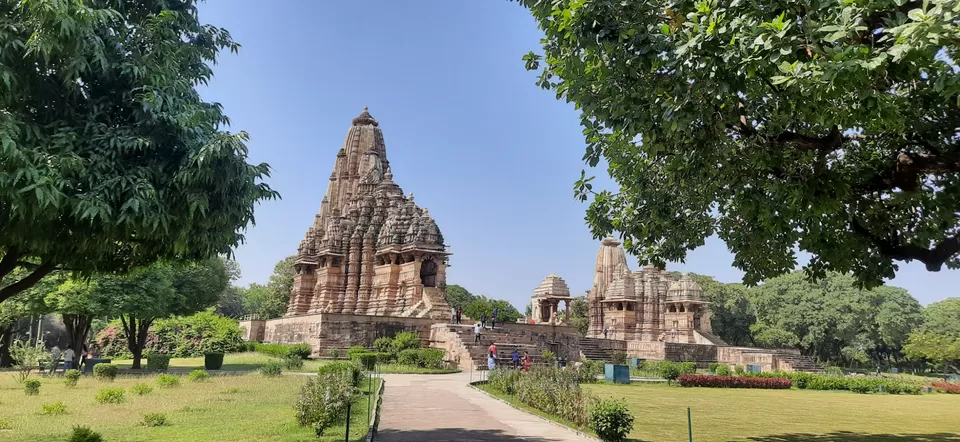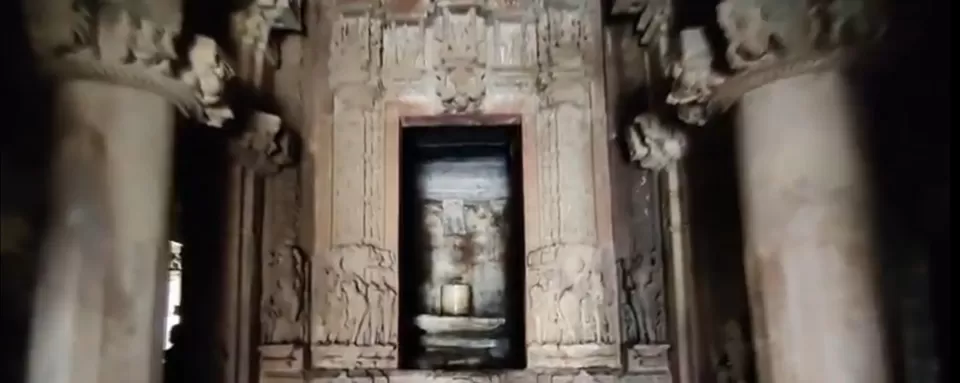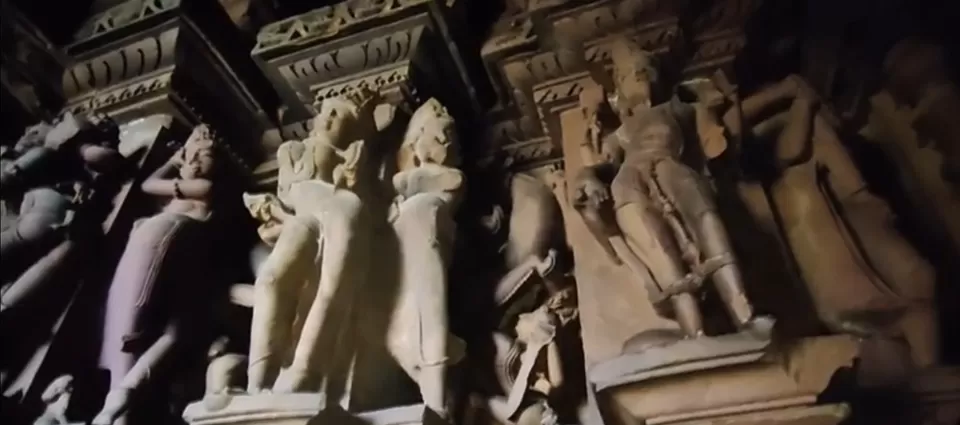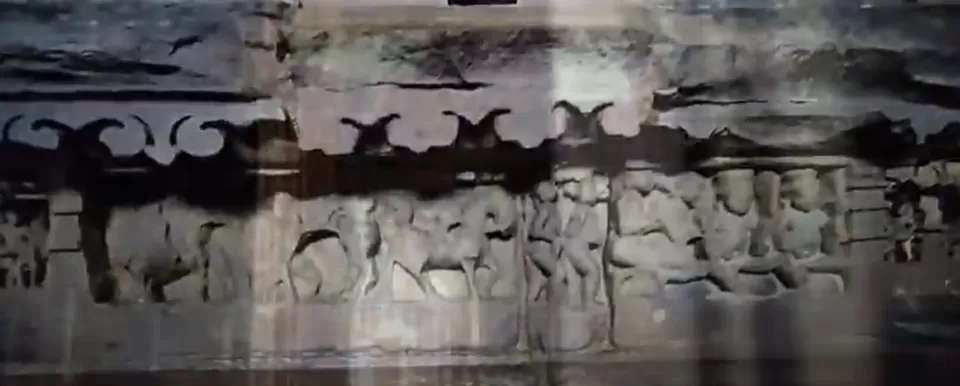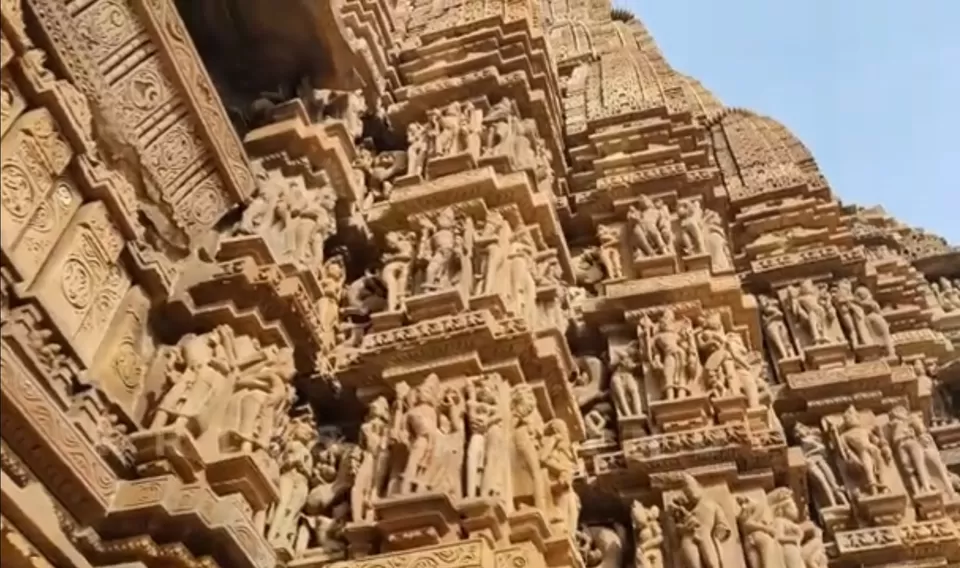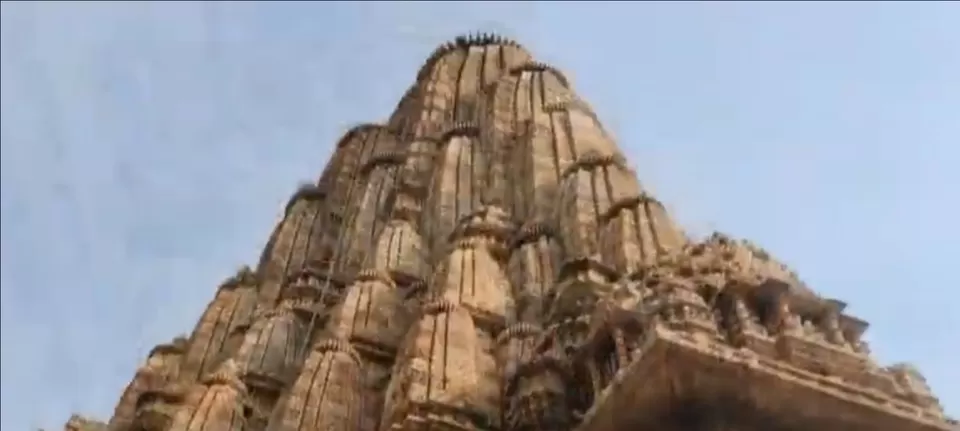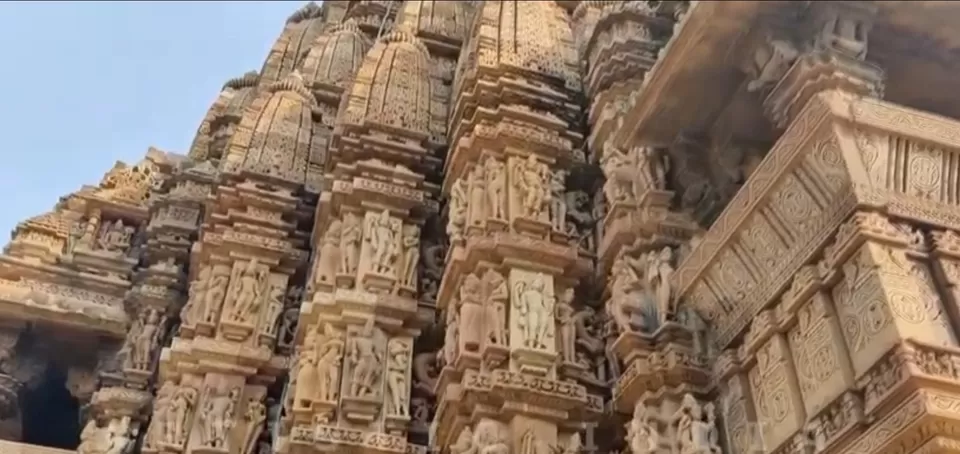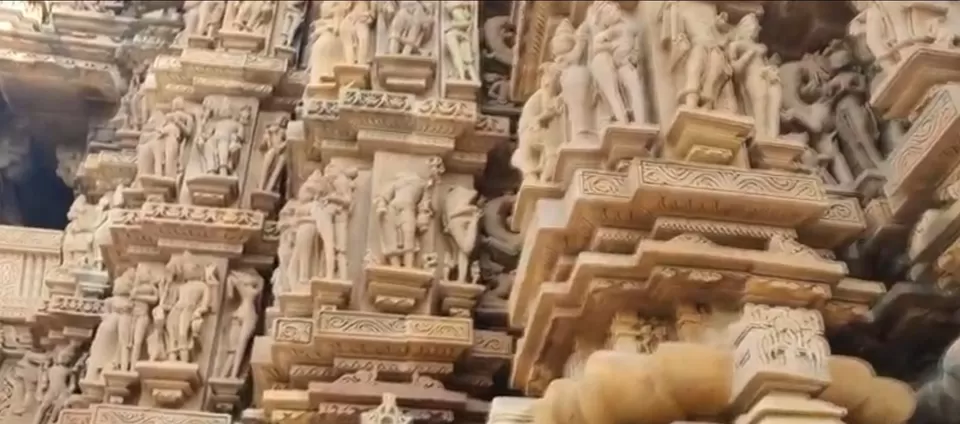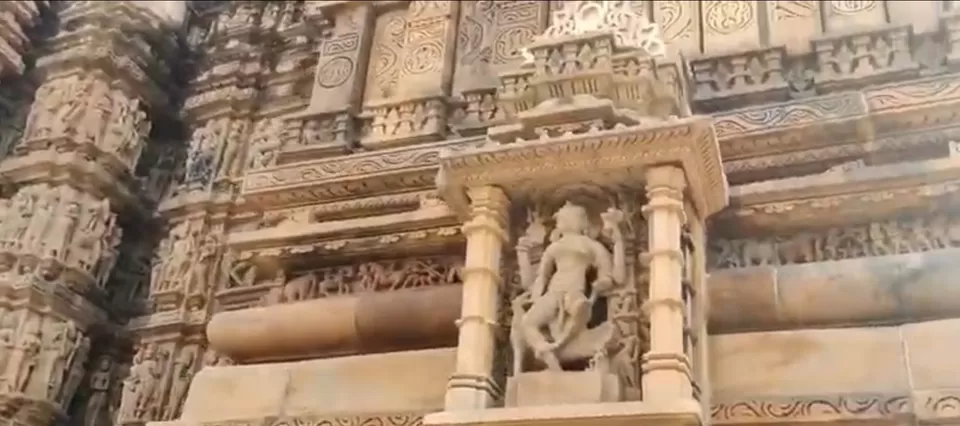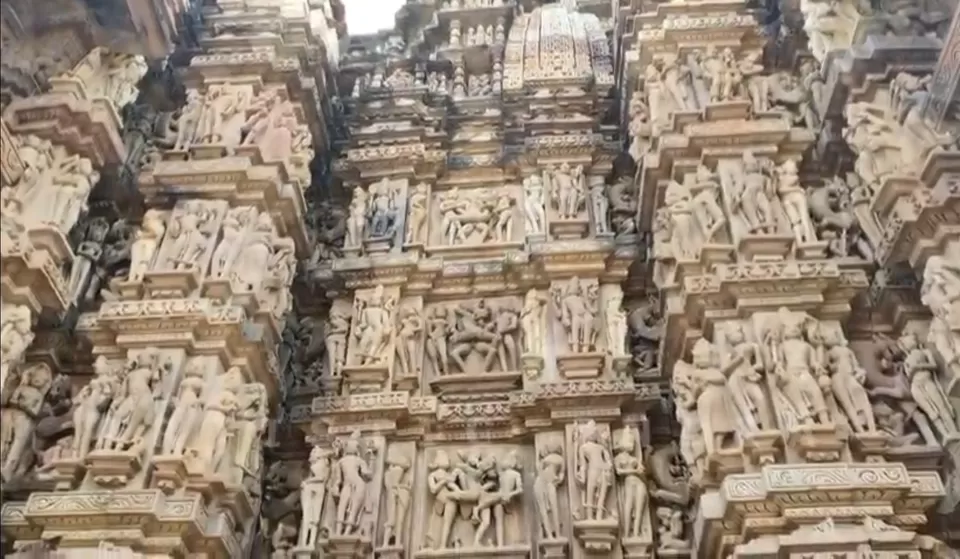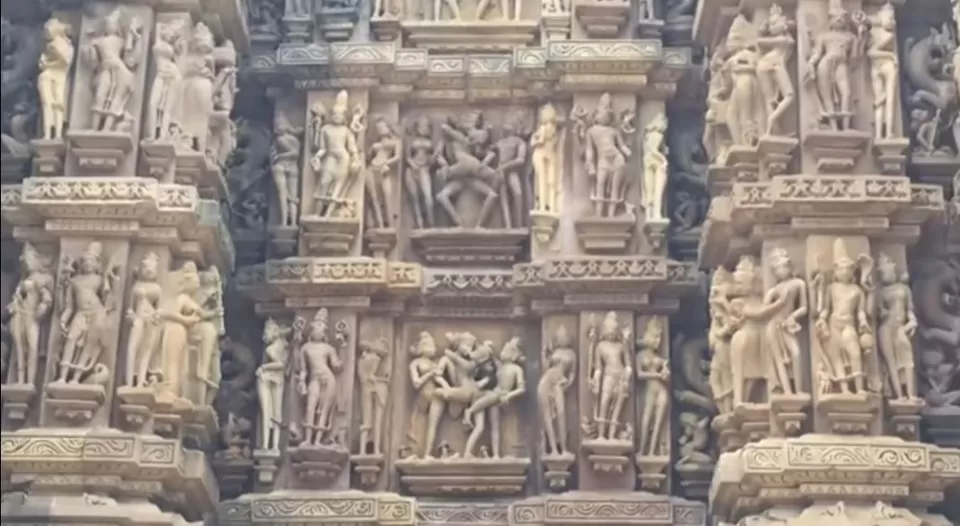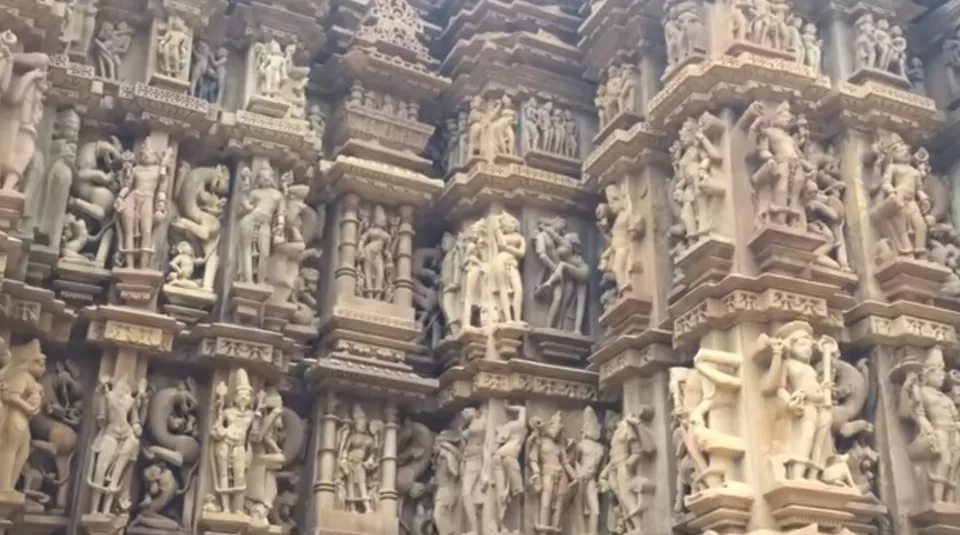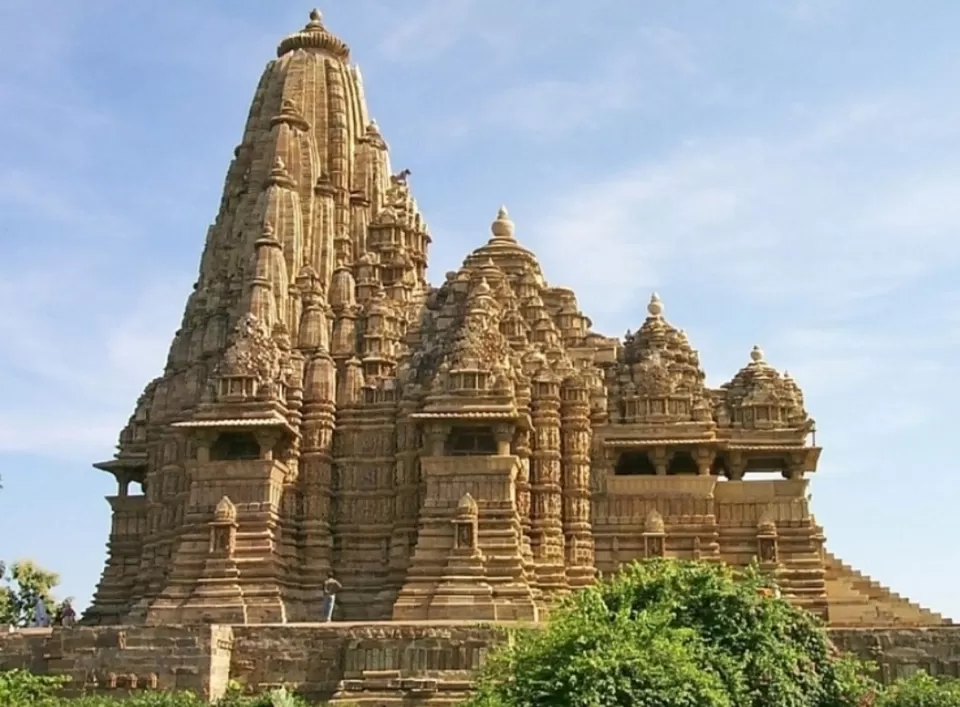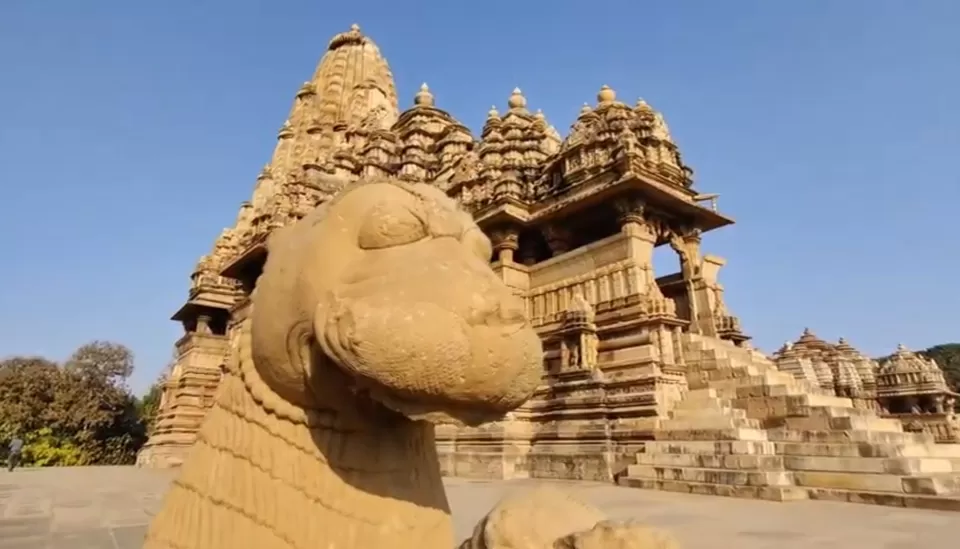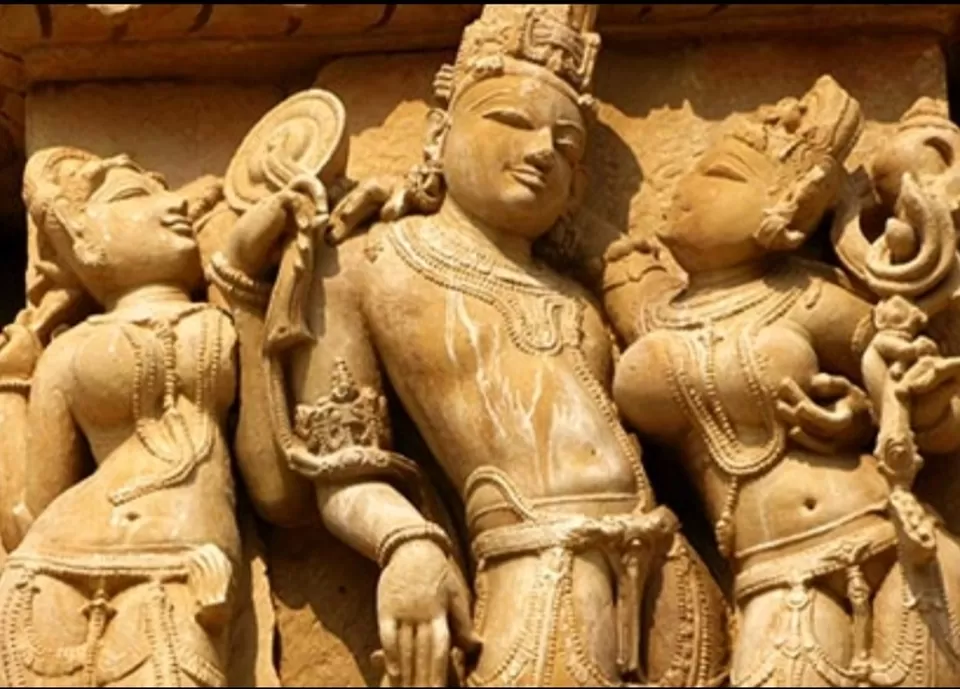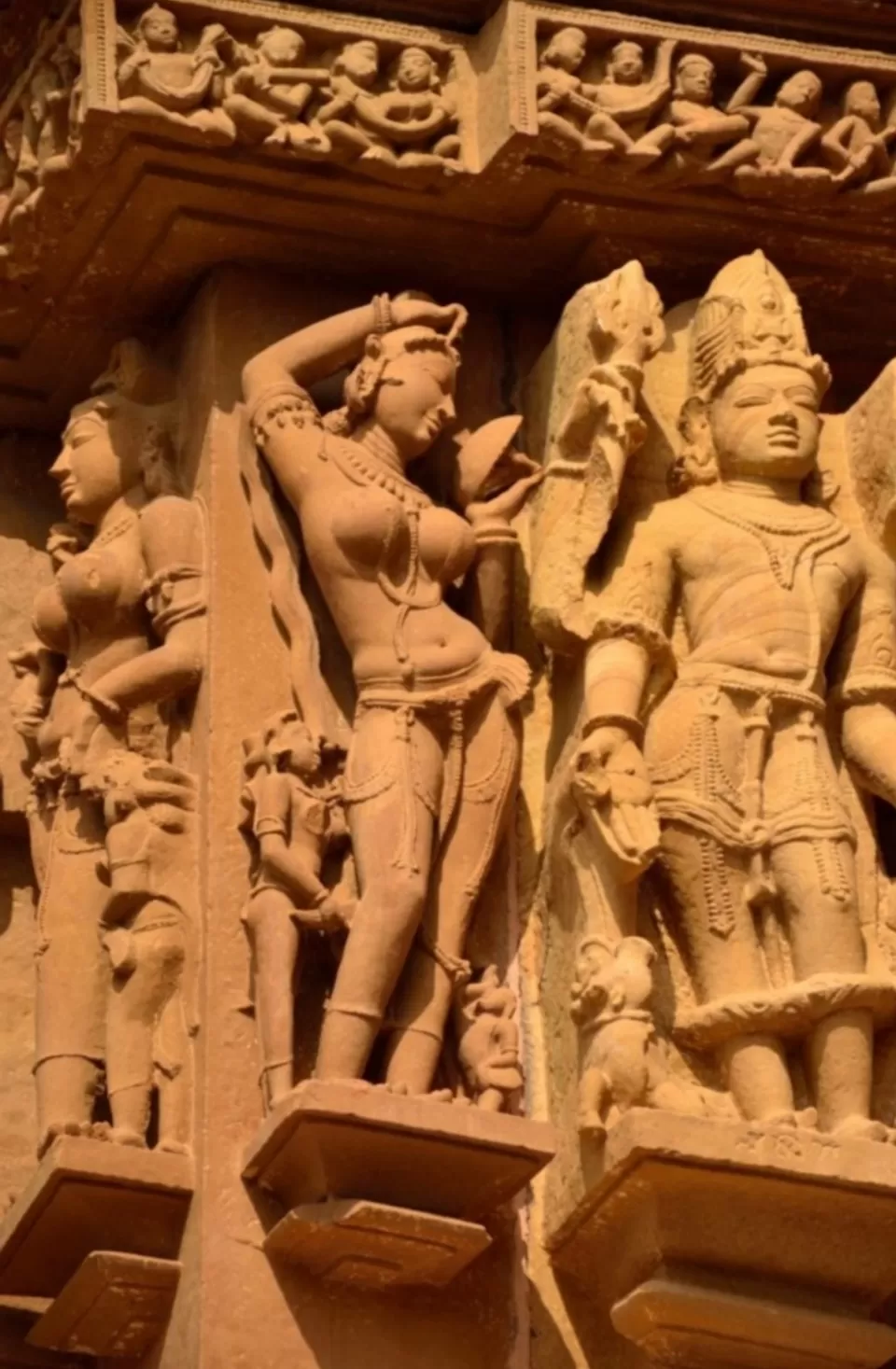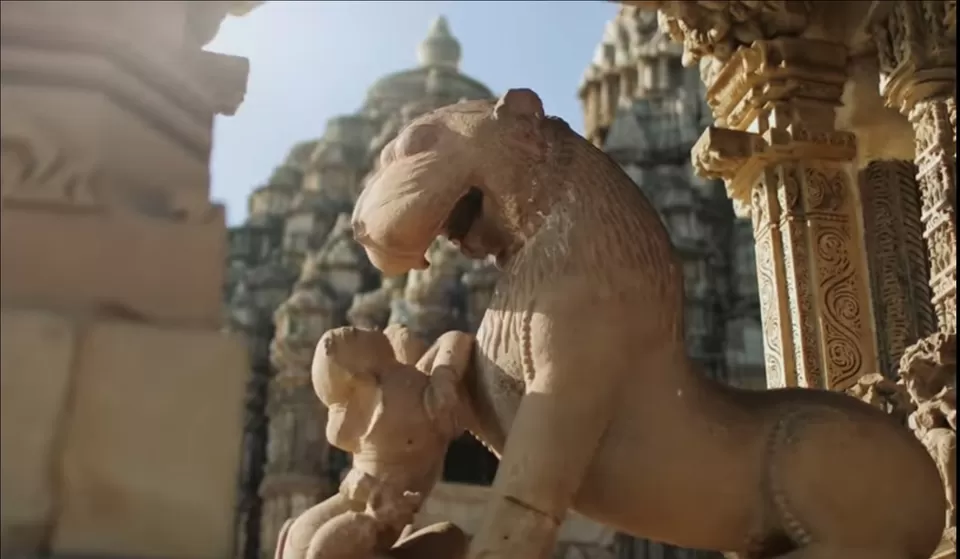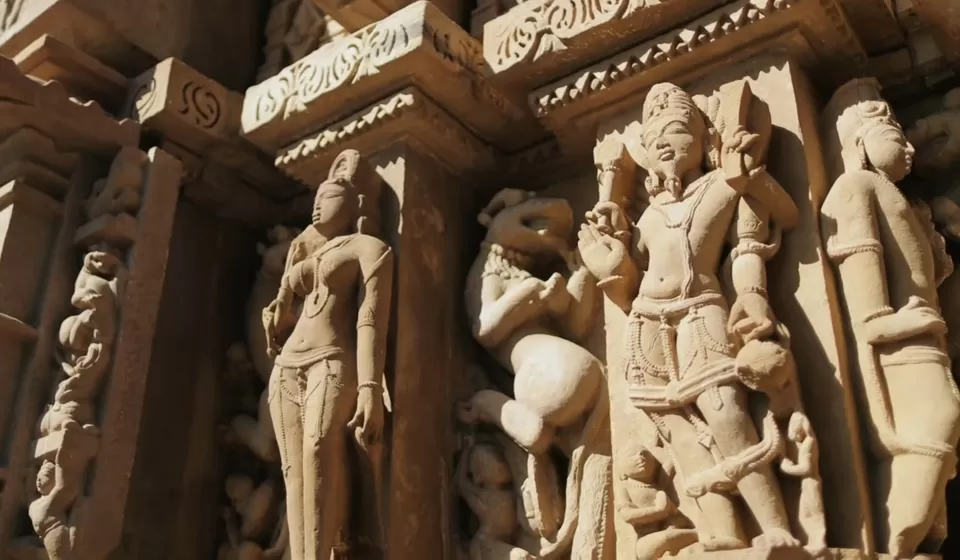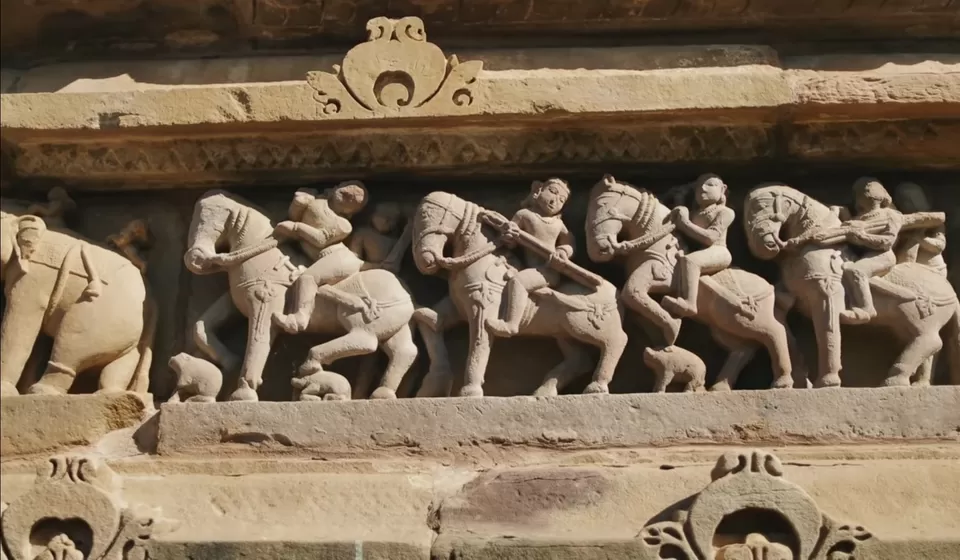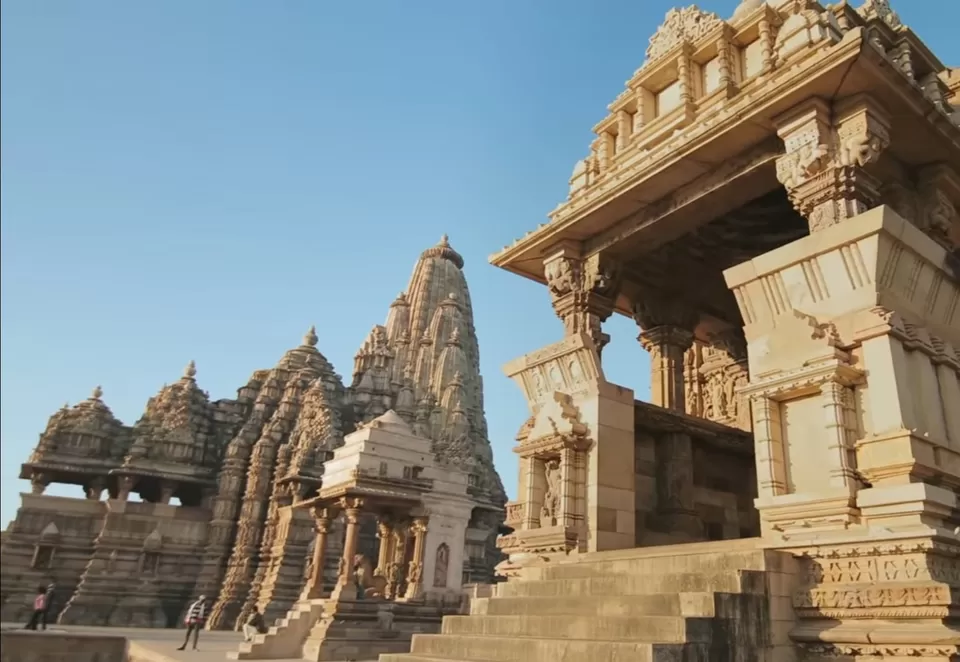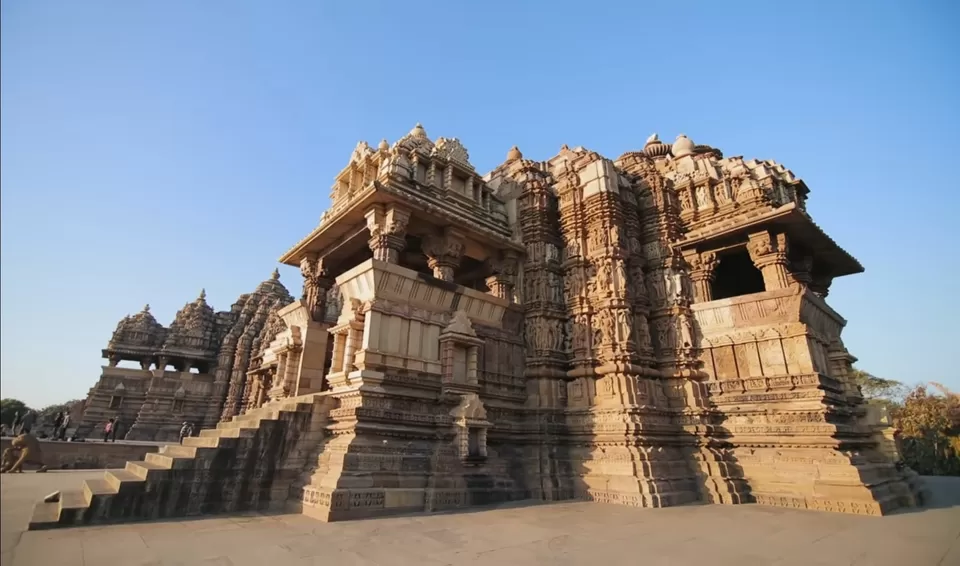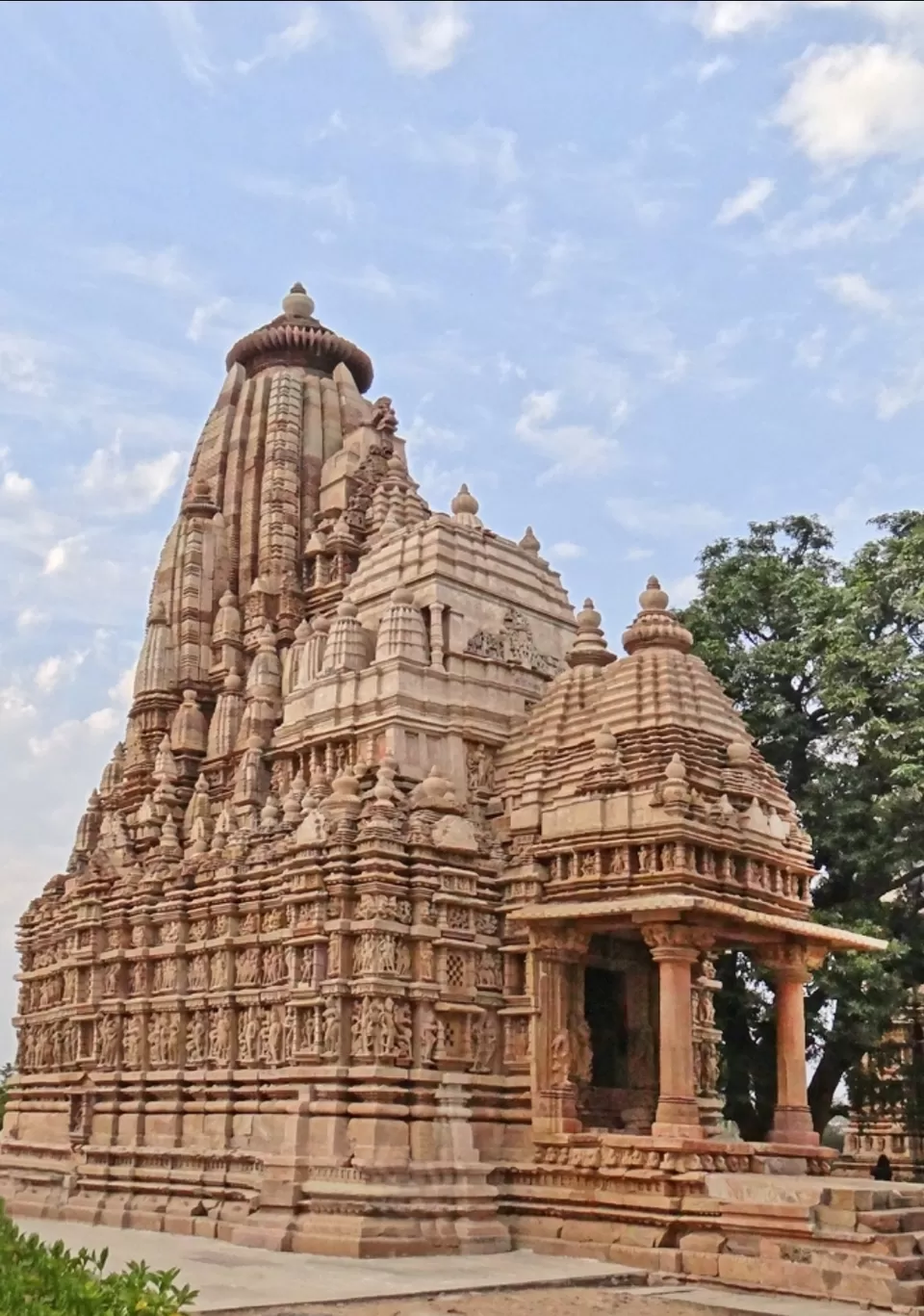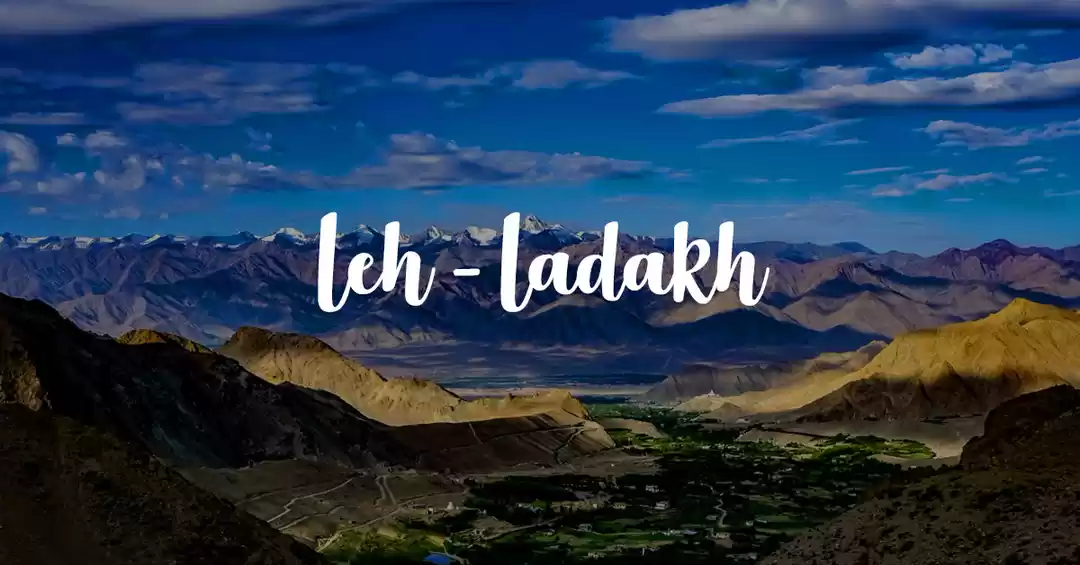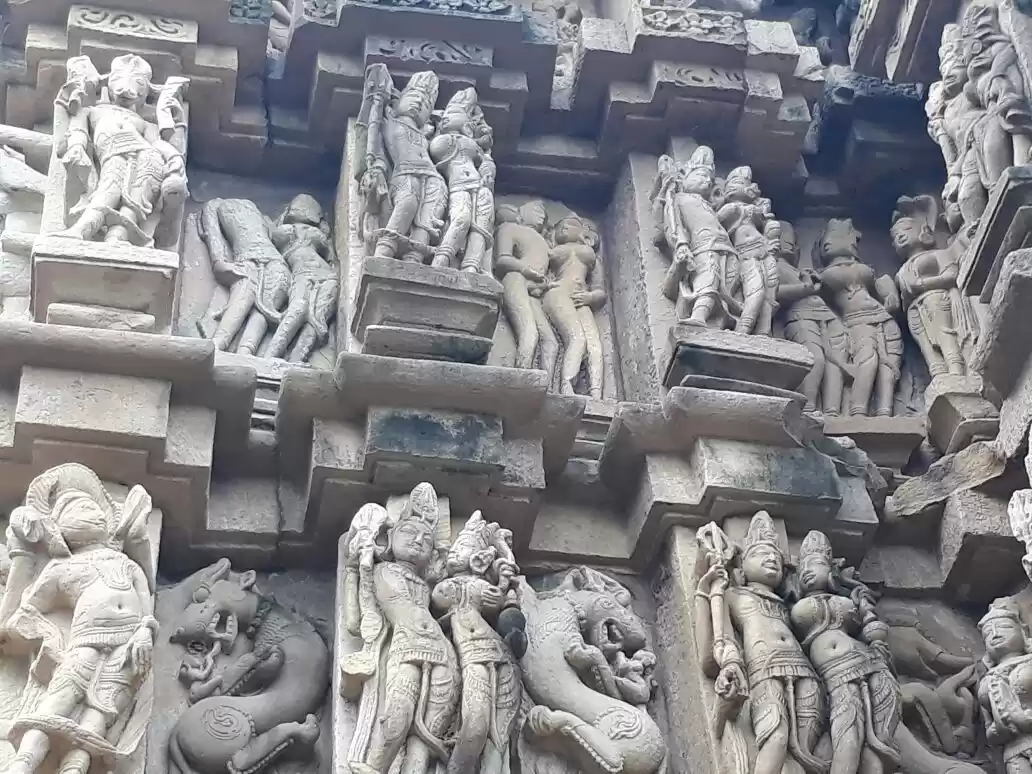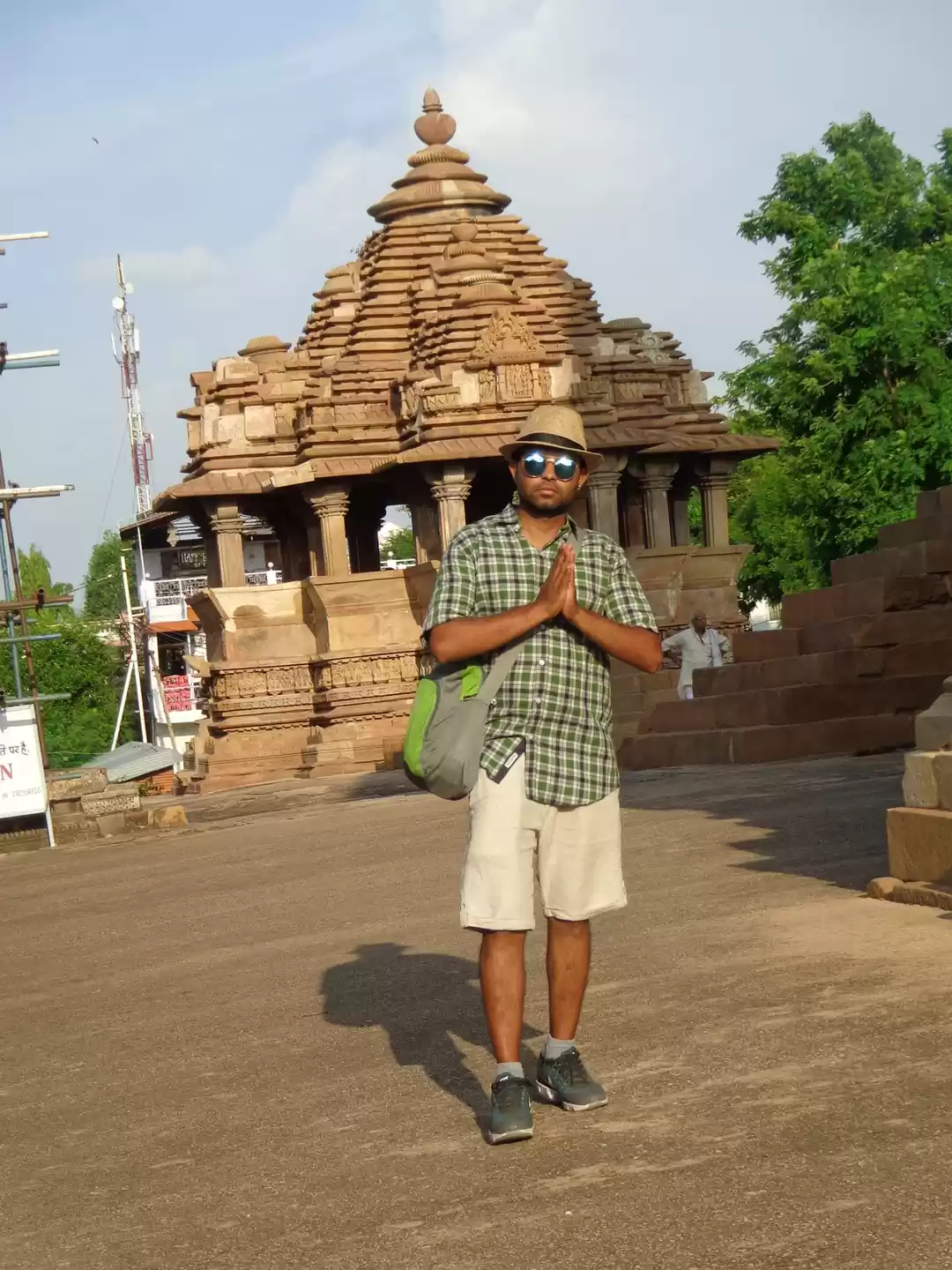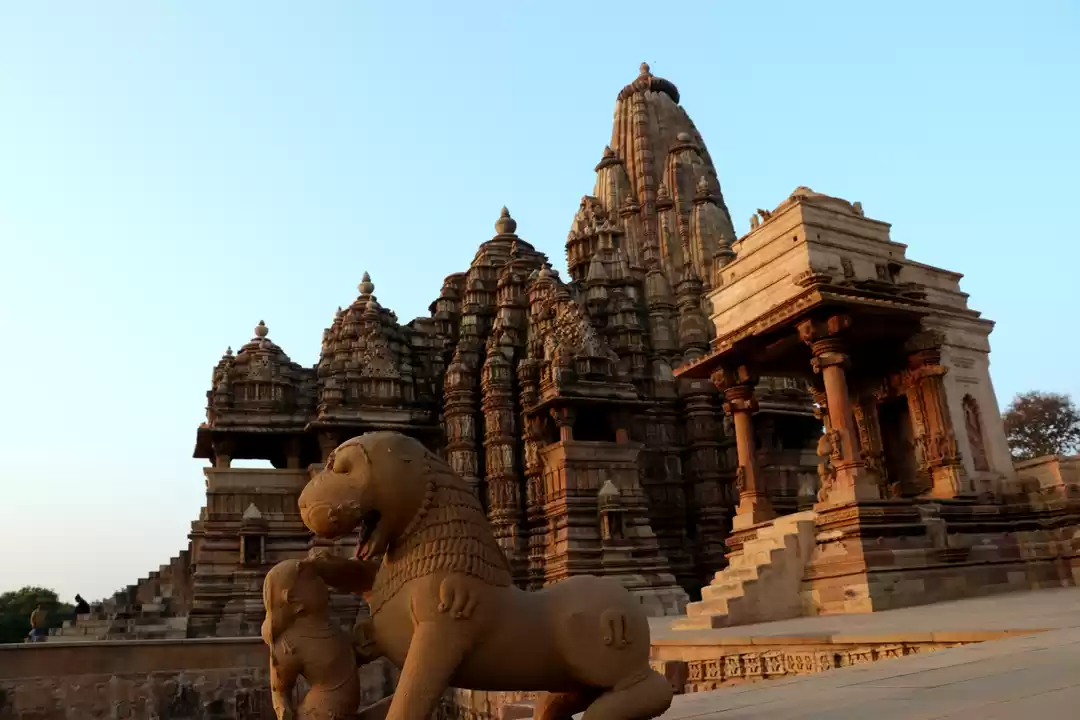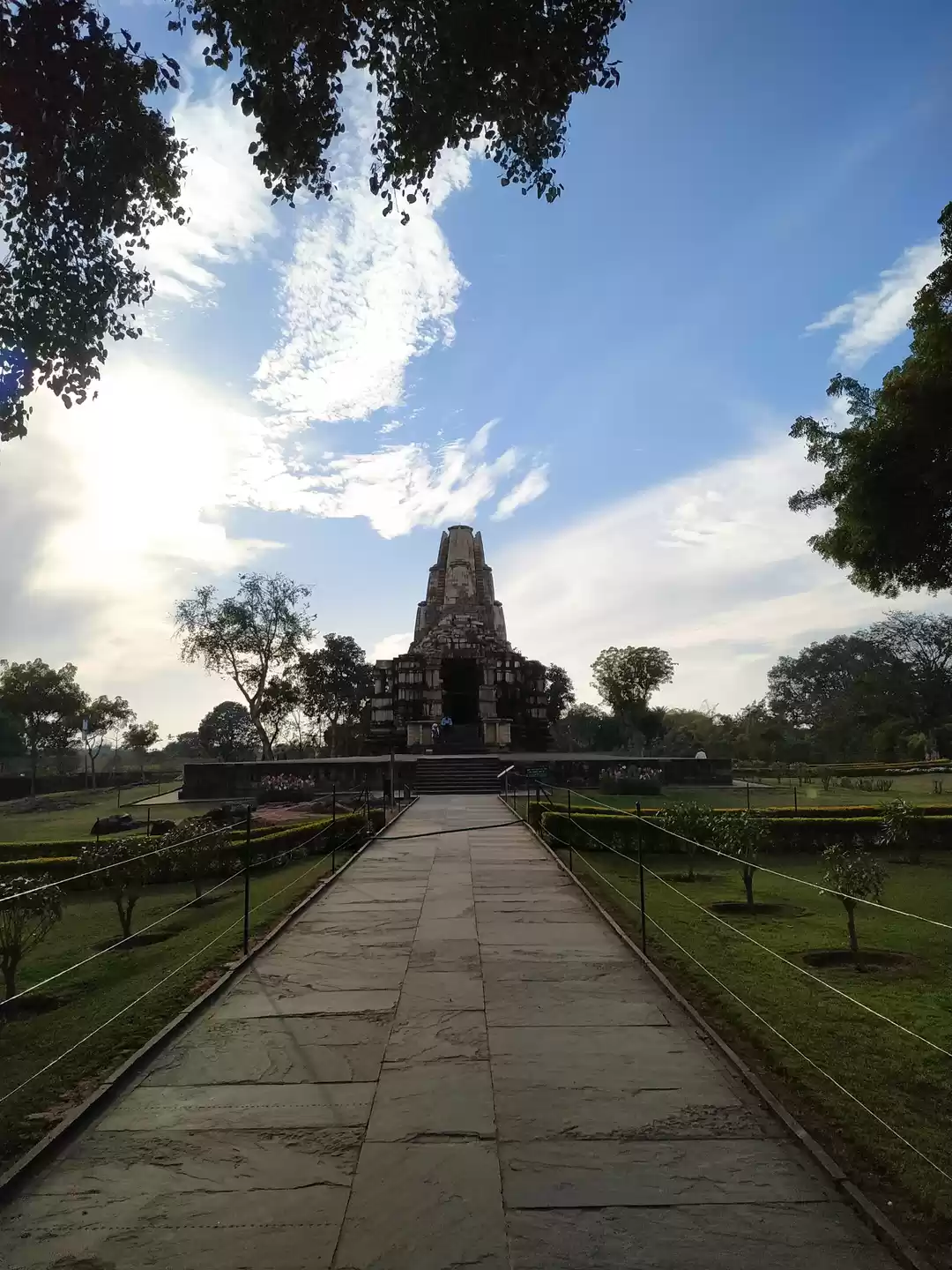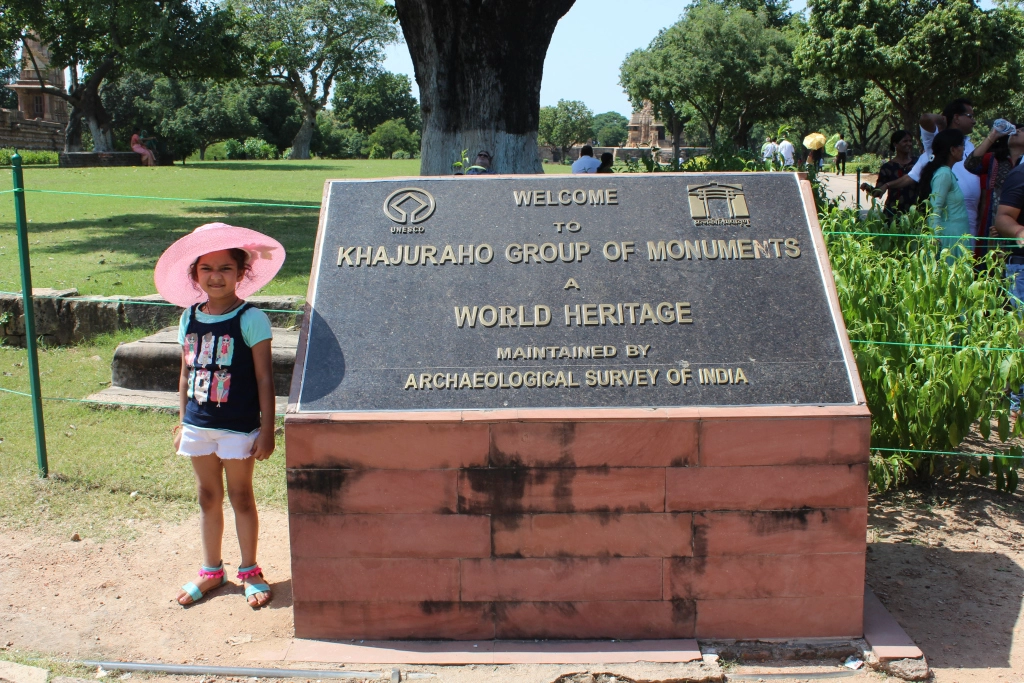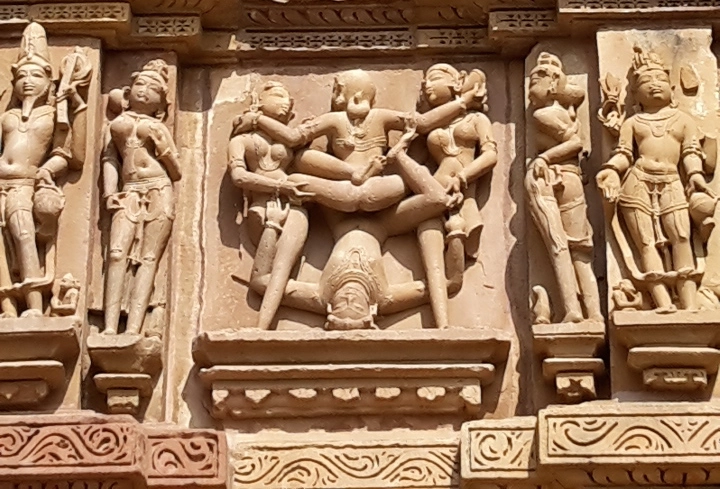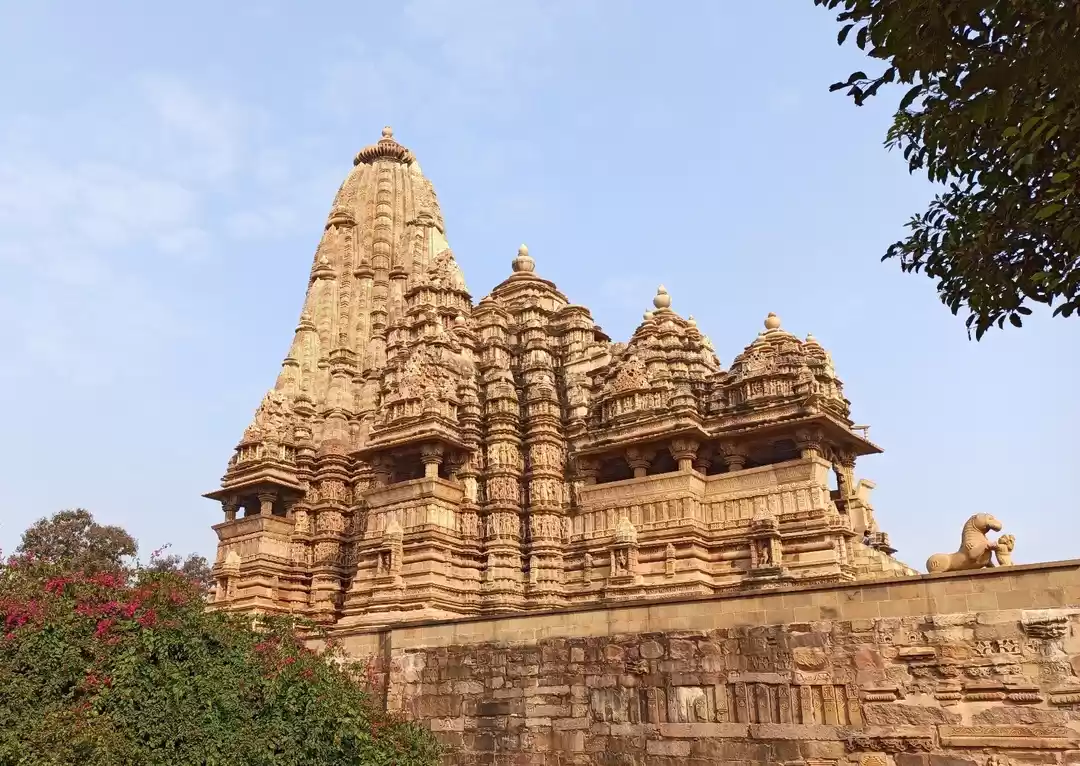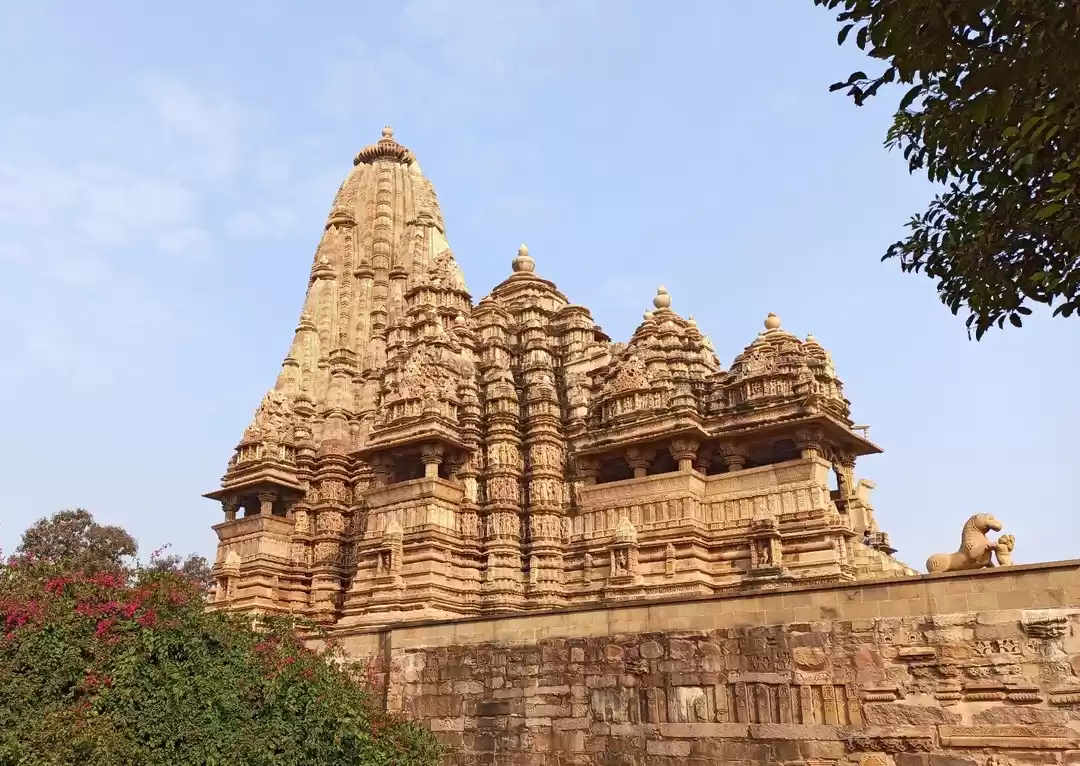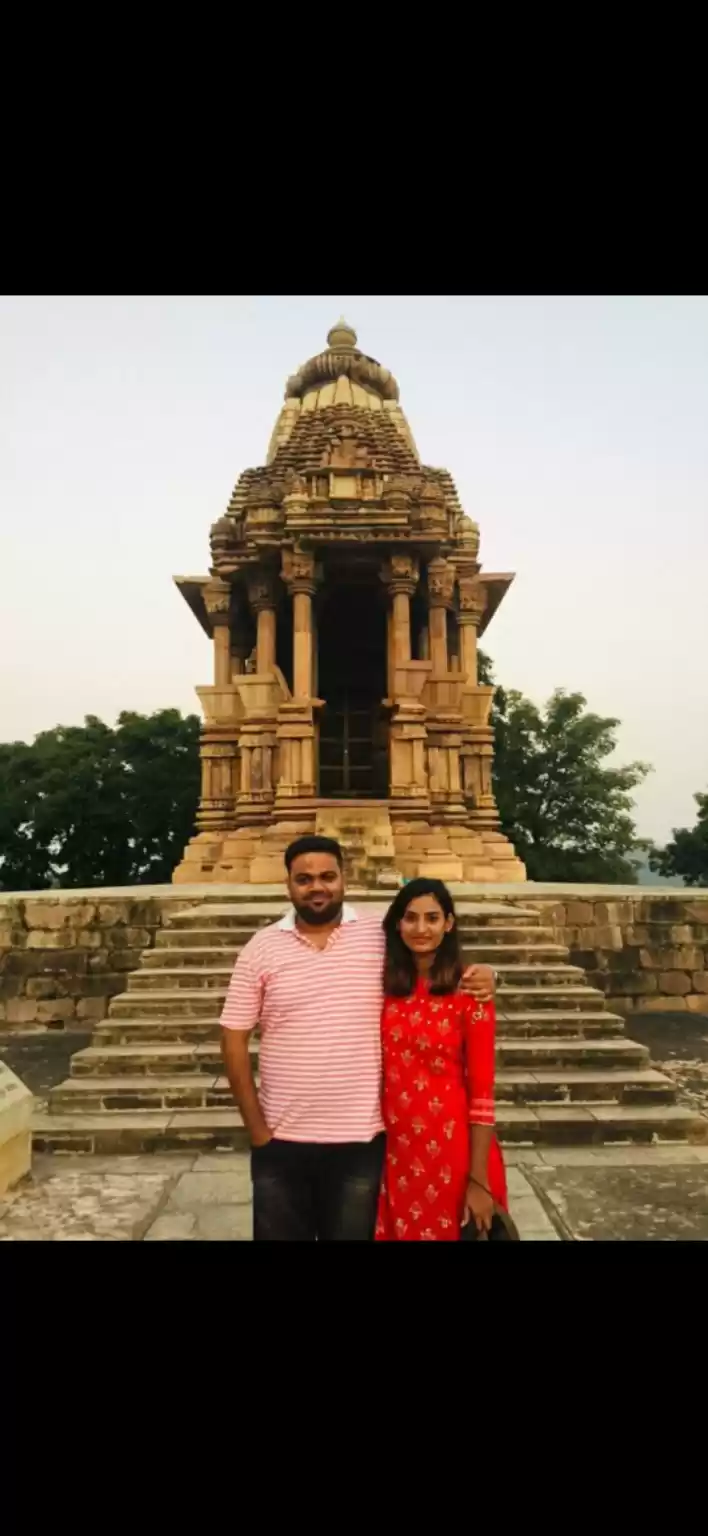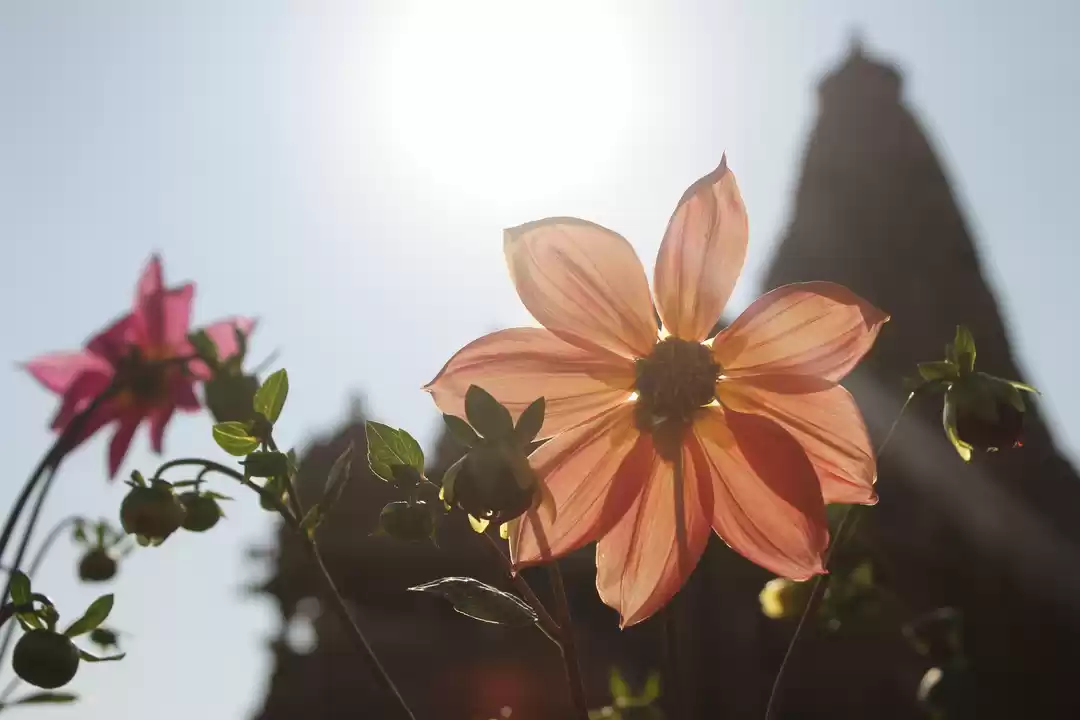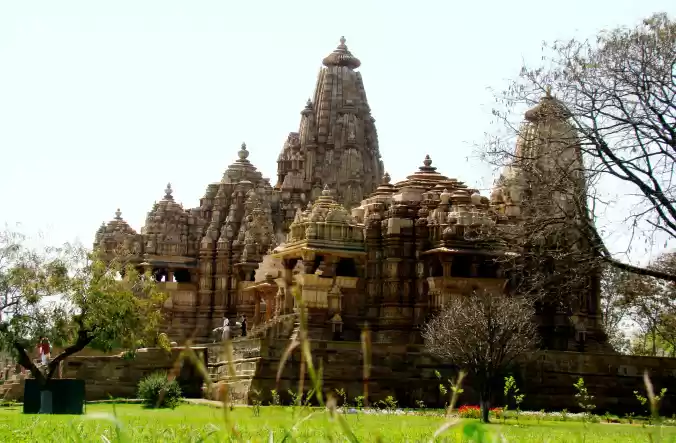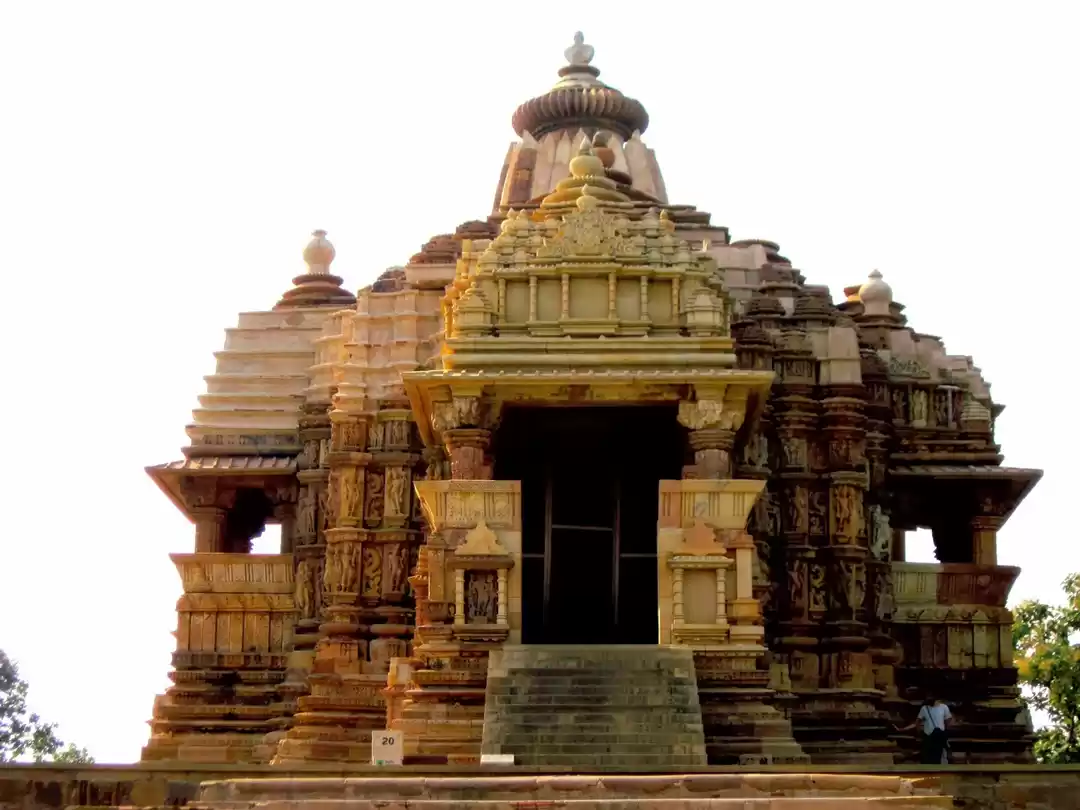Encircled within the Vindhya Mountain range in Central India set midst local hills and rivers are the most beautiful medieval monuments in the country, Khajuraho Temples, in Madhya Pradesh a UNESCO World Heritage Site. The temple complex reflects the ancient Hindu tradition of building temples where gods loved to pray!
These temples were built by the Chandela rulers between AD 900 and 1130.
It was the golden period of Chandela rulers. It is presumed that every Chandela ruler built at least one temple in his lifetime. So all Khajuraho Temples are not constructed by any single Chandela ruler, rather building Temples was a tradition of Chandela rulers and followed by almost all rulers of Chandela dynasty.
The building activity started almost immediately after the rise of their power, throughout their kingdom to be later known as Bundelkhand.
Most temples were built during the reigns of the Hindu kings Yashovarman and Dhanga.
The Khajuraho temples were built in the short span of a hundred years, in a truly inspired burst of creativity.
Khajuraho temples are in the Central Indian region, and were controlled by various Muslim dynasties from the 13th century through the 18th century. In this period, some temples were desecrated, followed by a long period when they were left in neglect.
In 1830 a British surveyor T.S. Burt guided by some Hindus rediscovered the temples which we and the global audience see today!
Legend says Hemvati was a beautiful woman, after whom the Khajuraho temples were built. One day, on a full moon night, when she was bathing in a pool in the forest, the Moon God was swooned by her beauty, and could not wait any longer to see her. They conceived a child and named him Chandravarman. However, she feared that her child might have to face harassment as he was born out of wedlock. She was so distressed that she cursed the Moon God, who later prophesied that the child will grow up to become a great king. Just like the prophecy, the child indeed grew to become a great king, who founded the Chandela dynasty.
One day, after Hemvati passed away, her son saw her in his dreams, where she asked him to construct temples that would depict human passions.
There are about 25 temples spread over an area of approximately six sq. Km. The temples are grouped into three categories depending on their orientation – the Western Group of Temples, the Eastern Group of Temples and the Southern Group of Temples.
Most of the temples in Khajuraho are built using sandstone but four also used granite in their construction.
In the latter group is the Chausath Yogini ~ 64 tantric goddesses, built c. 875-900 CE, which has 64 shrine rooms arranged around a rectangular courtyard, but it is in ruins and difficult to imagine how it must have been!
The temples feature the Nagara Style of architecture.
These temples are dedicated to several Hindu Gods and Goddesses along with deities in Jain beliefs. Among the temples that are standing till now, Six are dedicated to Lord Shiva, Eight to Lord Vishnu, One each to Lord Ganesha and the Sun God, while Three are dedicated to Jain Tirthankaras.
The largest of the temples is the Kandariya Mahadeo Temple that is dedicated to the glory of Lord Shiva.
Built around 1025-1050 AD, this temple exudes grandeur and finesse in its architecture. With beautiful frescos of women in various postures adorning the walls of this temple, this place is one of the most stunning tourists sites in Khajuraho.
Kandariya Mahadev Temple has an artistically engraved shrine with over 800 images of women, most of which are more than 3 feet high. The temple is dedicated to Lord Shiva and has a shivalingam at the centre of Garba Griha or Sanctum Sanctorum. Made of a typical sandstone structure, the artisitic representation of eroticism on the walls of this temple are bound to give a new perspective on India's cultural heritage.
The temples are known for their elaborate and intricate carvings and sculpture. While these sculptures depict various scenes from everyday lives, the Khajuraho temples are primarily known for the artful and erotic depiction of the female form as well as various sexual practices of the time. The architecture of these Hindu and Jain temples depict the erotic forms of love, the carvings on the walls display passion in the most sensuous yet aesthetic ways!
The sheer confrontational nature of these carvings shows a stark paradox with the conventional Indian ideals about eroticism, leaving everyone spellbound!!
The immaculate and erotic sculptures of its temples, Khajuraho has successfully taught the lessons of spirituality over greed!
Most popular psyche is that many find the carvings on the Khajuraho temples as offensive pornographic scenes. Perhaps, in all this, we tend to miss the most important point, the basic purpose of building these temples.
This UNESCO World Heritage site is far from being a petty representation of the Kama Sutra. The temples here, in fact, illustrate the erotic sculptures, which comprise only ten per cent of the Khajuraho complex of temples!
The rest of the carvings showcase potters, musicians and other common folk going about their everyday life!!
Regardless of the reason behind the sculptures, what we do know is that we have been gifted with a set of the most ornate,intricate and beautiful sculptures extant anywhere in the world!!
The more or less contemporary Laksmana temple was built in 954 CE by King Dhanga to celebrate independence from the Gurjara-Pratihara rulers and has a similar layout and exterior to the Kandariya Mahadeo.
So too does the Vishwanatha temple c. 1002 CE, which was designed by Sutradhara Chhichchha. Both temples have shrines at each corner of their terrace platforms. The Laksmana was dedicated to Lord Vishnu its terrace is especially noteworthy as it carries a narrative frieze running around all four sides. Elephants, warriors, hunters, and musicians form a procession watched by a ruler and his female attendants.
Other notable temples at the site include the single-towered Chaturbhuj and Vamana, the squat Matulunga, and the rectangular, more austere Parshvanatha Jain temple with its unique shrine added to the rear of the building .
According to historians, the Parshvanath temple is one of the oldest temples in the Eastern Temple complex and is dedicated to the Parshvanatha, the 23rd Tirthankara of Jainism. Unlike the temples of the Western complex, the temple is well known for its construction and extraordinary sculptures. Being one of the most preserved temples in Khajuraho, you will see scenes from everyday domestic life being portrayed on the walls of the shrine.
Probably the latest temple at Khajuraho is the Duladeo which was built on a star-plan.
The four Jain temples are primarily located among the eastern group of temples. The Parashvanath, Adinath, Shantinath and Ghantai temples are the ones dedicated to worshipping of the Jain Trithankaras.
Despite Khajuraho's once great reputation as an important cultural centre there are no surviving non-religious buildings, but the presence of 35 Hindu and Jain temples make it one of the most significant historical sites in India today and worthy of its name given by the 11th century CE Muslim historian Abu Rihan Alberuni as 'the City of the Gods'.
Art in this small town is engrained in all of its structures and are a classic example of the finesse of India's cultural and artistic heritage. The best part about Khajuraho is that although scores of plunderers tried to destroy the whole complex, they could never succeed, even though they managed to reduce the number of temples and caves to 25 from a staggering 85 at the time it was created.
The temples had, as their gate, two golden date-palm trees. And this is how Khajuraho was derived from the word ‘khajur ’, which means date palm.
If you have the slightest interest in architecture it's a must visit!
I suggest please do see, it's a must, the beautifully carried out Light and Sound show before you visit the temples, to understand the history better!
It is every evening in the temple complex narrated by veteran actor Mr. Amitabh Bachchan.
Do take a guide as they explain and point out a lot of things that you may miss out on your own.
To Reach Khajuraho
By Air: Jabalpur or Gwalior and travel by road to Khajuraho. It takes 5 hours by car.
By Train: Satna, Jabalpur or Gwalior and then by road.
Khajuraho has an airport which is not in operation right now due to Covid - 19, no foreign tourists.
P.C. Pranati Kamani
